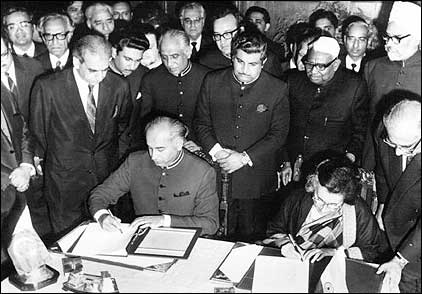Writes Shahzad Hussain Hamdani
All the great things are simple, and many can be expressed in a single word: freedom, justice, honor, duty, mercy, hope.
Winston Churchill
Public-interest litigation (PIL) is litigation for the protection of the public interest. PIL may be introduced in a court of law by the court itself (suo moto), rather than the aggrieved party or another third party. For the exercise of the court’s jurisdiction, it is unnecessary for the victim of the violation of his or her rights to personally approach the court. In PIL, the right to file suit is given to a member of the public by the courts through judicial activism. The member of the public may be a non-governmental organization (NGO), an institution or an individual.
PIL was started to protect the fundamental rights of people who are poor, ignorant or in socially/economically disadvantaged position. It is different from ordinary litigation, in that it is not filed by one private person against another for the enforcement of a personal right. The presence of ‘public interest’ is important to file a PIL.
Till 1960s and seventies, the concept of litigation in India was still in its rudimentary form and was seen as a private pursuit for the vindication of private vested interests. Litigation in those days consisted mainly of some action initiated and continued by certain individuals, usually, addressing their own grievances/problems. Thus, the initiation and continuance of litigation was the prerogative of the injured person or the aggrieved party. Even this was greatly limited by the resources available with those individuals. There were very little organised efforts or attempts to take up wider issues that affected classes of consumers or the general public at large.
However, this entire scenario changed during Eighties with the Supreme Court of India led the concept of public interest litigation (PIL). The Supreme Court of India gave all individuals in the country and the newly formed consumer groups or social action groups, an easier access to the law and introduced in their work a broad public interest perspective.
The splendid efforts of Justice P N Bhagwati and Justice V R Krishna Iyer were instrumental of this juristic revolution of eighties to convert the apex court of India into a Supreme Court for all Indians. And as a result any citizen of India or any consumer groups or social action groups can approach the apex court of the country seeking legal remedies in all cases where the interests of general public or a section of public are at stake. Further, public interest cases could be filed without investment of heavy court fees as required in private civil litigation.
Finally A PIL can be filed when the following conditions are fulfilled:
– There must be a public injury and public wrong caused by the wrongful act or omission of the state or public authority.
– It is for the enforcement of basic human rights of weaker sections of the community who are downtrodden, ignorant and whose fundamental and constitutional rights have been infringed.
– It must not be frivolous litigation by persons having vested interests.
Who may file a PIL?
The Supreme Court (SC), through its successive judgements has relaxed the strict rule of ‘locus standi’ applicable to private litigation.
Any person can file a PIL provided:
• He is a member of the public acting bona fide and having sufficient interest in instituting an action for redressal of public wrong or public injury.
• His action is not motivated by personal gain or any other oblique consideration.
How to file a PIL:
A PIL may be filed like a write petition. However, in the past the SC has treated even letters addressed to the court as PIL.
The concept of Public Interest Litigation (PIL) is in consonance with the objects enshrined in Article 39A of the Constitution of India to protect and deliver prompt social justice with the help of law. The Supreme Court of India, in Sunil Batra V/S Delhi Administration, 1980 (3) SCC 488 : 1980 SCC (Cri) 777 : AIR 1980 SC 1579 : 1980 CriLJ 1099, has accepted a letter written to the Supreme Court by Sunil Batra (an inmate of Tihar Prisons, near New Delhi) complaining of inhuman torture in the jail.
Thus the SC widened the field of filing of PIL for tackling issues related to environment, human rights etc.
As the Concept of Judicial Activism took a greater momentum, it also led to a division of thought related to Public Interest Litigation; like:
Firstly-PIL- A BOON:
1. In Public Interest Litigation (PIL) vigilant citizens of the country can find an inexpensive legal remedy because there is only a nominal fixed court fee involved in this.
2. Further, through the so-called PIL, the litigants can focus attention on and achieve results pertaining to larger public issues, especially in the fields of human rights, consumer welfare and environment.
Secondly-PIL-A BANE:
The development of PIL also uncovered its pitfalls and drawbacks. As a result, the apex court itself has been compelled to lay down certain guidelines to govern the management and disposal of PILs. And the abuse of PIL is also increasing alongwith its extended and multifaceted use.
Of late, many of the PIL activists in the country have found the PIL as a handy tool of harassment since frivolous cases could be filed without investment of heavy court fees as required in private civil litigation and deals could then be negotiated with the victims of stay orders obtained in the so-called PILs.
Just as a weapon meant for defence can be used equally effectively for offence, the lowering of the locus standi requirement has permitted privately motivated interests to pose as public interests. The abuse of PIL has become more rampant than its use and genuine causes either receded to the background or began to be viewed with the suspicion generated by spurious causes mooted by privately motivated interests in the disguise of the so-called public interests.
THUS today, in an era of coalition politics with an unstable Centre, and the eroded credibility of the legislature and the executive, the judiciary has taken centre stage. But it is time to put the genie back into its bottle and confine public interest jurisdiction to its original purpose of being the sole representatives of the poor and the exploited. For this purpose, a set of guidelines must be set to sustain juridical equity and transparency and also to make accountability obligatory for the judges. As it is said, that do not condemn the orchard due to some rotten apples, similarly all in all, there is a good lot who do command the country’s confidence.
IN this Article some source is based on information from Wikipedia.


















Leave a Reply